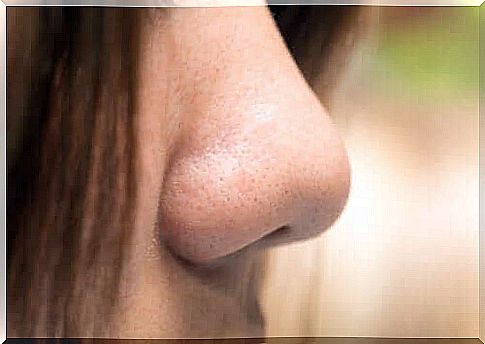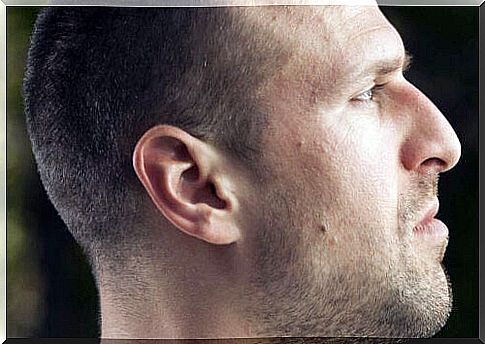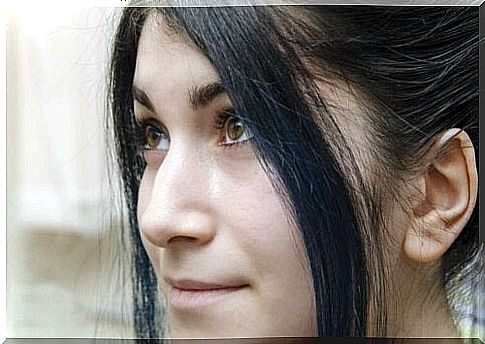The Different Nose Shapes: What Is Yours?

From an aesthetic point of view , the center of the face is very important for the harmonization of the facial features of the face. This is why people’s face largely depends on the different nose shapes.
In addition, the nose of course allows you to breathe, pick up odors and hold glasses. In this article, we will focus specifically on the different nose shapes.
Do you know what type you have?
The different nose shapes
As with the rest of the character traits of the face , each person’s nose is different and has different character traits. For that reason, we can say that even though they are all different, they always harmonize the face.
The anatomical design of a nose is basic: nostrils and nasal cavities through which air flows, two nostrils covering these cavities, a septum and the tip. These are elements that determine the type of nose shape.
However, there can be many differences between noses. Noses vary, among other things, according to the shape of the bridge of the nose, the height, the width and the opening of the nostrils. It makes it possible to classify them into large groups based on their general shape.

Flat nose
A flat nose is characterized by having a short, sunken nasal ridge. The nostrils are pulled out to the sides. The tip is also flat.
It got its name because it has a sunken or flat appearance seen from the side. In other words, the nose does not protrude very far from the face.
Flat noses are common in populations with yellow or black skin tones. In Asians, they are less broad than in people from Africa.
Upward nose
Unlike the previous type, an ascending nose has a prominent nasal tip. The septum is usually straight, although it curves slightly upwards at the tip. The nasal cavities therefore seem to point forward.
This type of nose is common in people from Northern Europe. Regardless, however, it also dominates in other population groups. This type of nose is the result of an adaptation that allows people to better breathe cold air.
From the side, ascending noses look pointed like those in some comics. It is one of the most sought after nasal forms in plastic surgeons. However, we need to point out that not all faces harmonize in the same way.
Different nose shapes: Wide nose
The special feature of wide noses is that they are wide right from the bridge of the nose down to the tip. The famous basketball player, Lebron James, has this type of nose shape.
The nasal wings are dilated, as are the nasal cavities. This nasal form is common in Africans, East Asians and South Americans. It is also common in some North African populations including Sudan.
Roman nose
A Roman nose has a high, long and prominent nasal ridge. The partition arch inwards at the tip. This is why it is also known as a crooked nose or a beak as it resembles the beak of a bird. It is most visible from the side.
It is characteristic of certain southern European ethnic groups (Spain, Italy, France and Portugal). It is also common among Arabs and the territories that at one time were occupied by them in the past, as well as among Slavic peoples.
Greek nose
A Greek nose is balanced in its proportions. The bridge of the nose is straight, the septum is barely prominent, and the nostrils are small. The nasal wings therefore do not expand much. It is perfect for the Greek face.
You can see this type of nose on Greek works of art and sculptures. This type of nose dominates in European countries by the Mediterranean, although it is not exclusive to this area.
Different nose shapes: Pear-shaped noses
As the name suggests, this nose looks like a pear. It has a round, wide nose tip. The nostrils do not actually protrude very much.
The round nose tip is of course visible as well as the enlargement of the part that surrounds the nasal cavities. This type of nose shape is common in people of black skin color, people of African descent and Americans of mixed descent.
Small noses
A small nose looks upward. It is much shorter at the bridge of the nose. It can be round at the root. It is also generally not very wide and has small nostrils and small nostrils.
The distance from the arch of the eyebrows to below the nostrils is short compared to other types of nose shapes. That’s why it looks small in a person’s face.
Different nose shapes: Big and thick noses
This nose occupies a large part of a person’s face. It can be proportional, hooked or with a large nose wing with a round tip.
This type of nose is prominent from the side, but also seen from the front. The well-known author, Cyrano de Bergerac, is an example of a person with a broad and dominant nose.
This type of nose does not dominate in a particular population group. Yet it is the least common among Asians and northern Europeans.

Odd, crooked and asymmetrical noses
Some people’s noses may be odd. One side may be different from the other. It can also look like an arc shaped like an S when viewed from the front. This inequality or asymmetry may be caused by an injury.
The actor, Owen Wilson, has this type of nose.
Different noses
The nose is a part of the face that attracts a lot of attention. Each of the different nose shapes is different and very personal. However, not everyone is happy with their nose. This is why many people consider having plastic surgery as an option to improve or change the shape of their nose.
However, the need for a surgical procedure can also be a health problem, a skewed septum or a congenital malformation.
In general, the shape of the nose reflects many things. For example, it is our ancestors, culture and geographical location. The different nose shapes can actually also tell us who we are and where we come from.









